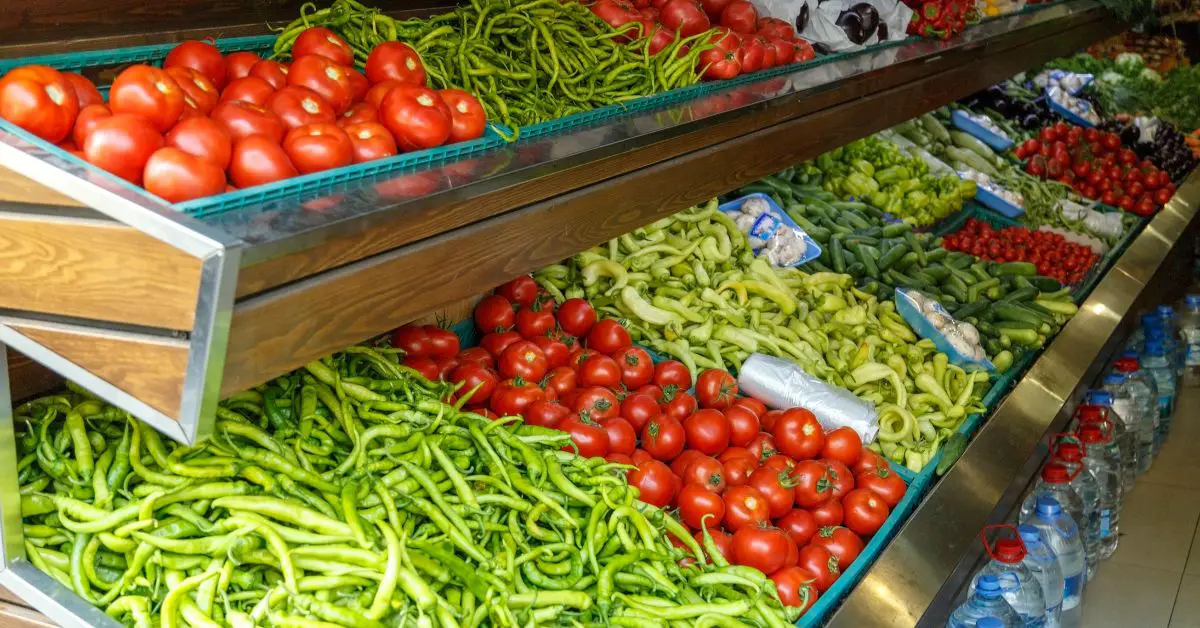74 Tips on How to Start Vegetable Business
Starting a vegetable business in India can be a viable and fulfilling experience if you are interested in agriculture and entrepreneurship. With a growing demand for fresh and locally-sourced produce, the vegetable industry presents numerous opportunities for success. However, starting a business in any industry can be daunting, especially if you are new to the field.
This blog will guide you through the 74 tips on how start a vegetable business in India, including identifying your target audience, sourcing suppliers, and creating a business plan. By following these tips, you can get your vegetable business up and running in no time. Whether you are looking to start a small in-house garden farm or a large vegetable export business, this blog has everything you need to know to get started.

- Research the market: Research the local market to understand the demand for different types of vegetables and identify potential customers.
- Develop a business plan: Outline your business goals, target market, competition, financial projections, and strategies for growth.
- Obtain the necessary licenses and permits: Check with your local government to determine what licenses and permits are required for your specific vegetable business.
- Find a suitable location: Look for a location that is easily accessible, has suitable soil and weather conditions for growing vegetables and has a high foot traffic.
- Secure funding: Consider different options, such as a small business loan, crowdfunding or investors.
- Develop a farm plan: Develop a farm plan that outlines the types of vegetables you will grow, the layout of your farm, and the equipment you will need.
- Create a marketing plan: Create a marketing plan to promote your business, such as social media, flyers, or online ads.
- Build a website: Build a website that provides information about your business, products, and services.
- Hire staff: Hire a team of experienced staff members, including farm hands, managers and sales staff.
- Create a sales plan: Develop a sales plan to reach customers, such as farmers markets, grocery stores, restaurants, and online sales.
- Create a pricing strategy: Develop a pricing strategy that takes into account production costs, competition and customer demand.
- Learn about crop rotation: Learn about crop rotation to maintain soil fertility and prevent the spread of pests and diseases.
- Learn about irrigation: Learn about irrigation to ensure that your crops receive the right amount of water.
- Learn about fertilization: Learn about fertilization to ensure that your crops receive the right nutrients.
- Learn about pest control: Learn about pest control to protect your crops from pests and diseases.
- Learn about harvest and storage: Learn about harvest and storage to ensure that your vegetables are harvested and stored at the right time and in the right conditions.
- Implement sustainable farming practices: Implement sustainable farming practices, such as crop rotation, composting, and integrated pest management, to minimize the environmental impact of your business.
- Create a social media presence: Create a social media presence by setting up accounts on Facebook, Instagram, Twitter, and other platforms.
- Participate in local events: Participate in local events, such as farmers markets and agricultural fairs, to promote your business and connect with customers.
- Continuously improve: Keep a close eye on your business’s performance, listen to customer feedback and make necessary improvements.
- Create a brand: Create a unique brand identity that reflects your business’s mission and values, and use it consistently across all marketing materials.
- Develop a product line: Develop a product line of different types of vegetables, such as heirloom, organic, or specialty varieties, to stand out from the competition.
- Use a subscription service: Use a subscription service to deliver fresh vegetables to customers on a regular basis.
- Use a food delivery service: Use a food delivery service to reach more customers and expand your reach.
- Create a vegetable box delivery service: Create a vegetable box delivery service to deliver a curated selection of vegetables to customers.
- Create a farm-to-table service: Create a farm-to-table service to connect customers directly with farmers and provide them with fresh, locally-sourced produce.
- Create a CSA program: Create a CSA (Community Supported Agriculture) program to allow customers to buy shares of your farm’s harvest in advance.
- Offer tours: Offer tours of your farm to educate customers about your farming practices and allow them to see where their food comes from.
Make use of digital marketing

- Create a blog: Create a blog to share information about your farm, such as recipes, farming tips, and information about your products.
- Use social media: Use social media to share information about your farm, such as recipes, farming tips, and information about your products.
- Use email marketing: Use email marketing to reach potential customers and keep them informed about new products, sales, and events.
- Use paid advertising: Use paid advertising, such as Google AdWords, to drive traffic to your website and generate leads.
- Create a mobile app: Create a mobile app to allow customers to place orders, track delivery and pay for their products.
- Use food bloggers and influencers: Use food bloggers and influencers to create buzz and promote your business.
- Offer a loyalty program: Offer a loyalty program to reward customers who frequently buy your products.
- Create a vegetable guide: Create a vegetable guide to educate customers about the different types of vegetables you offer, how to store them, and how to prepare them.
- Create a cooking class: Create a cooking class to teach customers how to prepare your vegetables in different ways.
- Create a recipe book: Create a recipe book to share recipes that feature your vegetables.
- Use data analytics: Use data analytics to track your business’s performance, including the number of sales, revenue generated, and customer demographics.
- Use customer feedback: Use customer feedback to improve your products, service, and overall
- Create a wholesale division: Create a wholesale division to sell your produce to restaurants, grocery stores and other food retailers.
- Invest in packaging and branding: Invest in packaging and branding to make your products stand out on the shelf and increase customer appeal.
- Create a mobile farm stand: Create a mobile farm stand to sell your products at different locations, such as farmers markets or street corners.
- Offer pick-your-own options: Offer pick-your-own options, such as u-pick berries, to attract customers and provide a unique experience.
- Create a membership program: Create a membership program to offer exclusive deals and discounts to customers who sign up.
- Create a referral program: Create a referral program to reward customers who refer friends and family to your business.
- Use SEO: Use search engine optimization (SEO) to improve your website’s visibility and drive more traffic to your site.
- Use Google Analytics: Use Google Analytics to track and analyze your website’s traffic and customer behavior.
- Create a customer loyalty program: Create a customer loyalty program to reward customers for repeat purchases.
- Create a customer feedback system: Create a customer feedback system to gather feedback from customers and use it to improve your products and services.
- Use a CRM: Use a customer relationship management (CRM) system to keep track of leads and customers, and to automate follow-up tasks.
- Create a newsletter: Create a newsletter to keep customers informed about new products, sales, and events.
- Partner with other businesses: Partner with other businesses, such as restaurants, grocery stores, and food co-ops, to expand your reach and offer added value to customers.
- Use video marketing: Use video marketing to showcase your farm, products and growing practices.
- Use Influencer marketing: Use Influencer marketing to connect with a wider audience and drive more traffic to your website.
- Develop a mobile-friendly website: Develop a mobile-friendly website to make it easy for customers to access your site from any device.
- Use remarketing: Use remarketing to target customers who have visited your site before and encourage them to make a purchase.
- Optimize your website for conversions: Optimize your website for conversions by making it easy for customers to find what they’re looking for and make a purchase.
- Create a blog: Create a blog to share information about your farm and your products and to provide valuable information to your customers.
- Use Instagram Stories: Use Instagram Stories to connect with customers and share information about your farm and products.
- Use Instagram Live: Use Instagram Live to connect with customers in real-time, answer questions and provide information about your farm and products.
- Use Instagram Reels: Use Instagram Reels to create short, engaging videos to showcase your farm and products.
- Offer discounts and promotions: Offer discounts and promotions to attract new customers and retain existing ones.
- Use Twitter: Use Twitter to share information about your farm and products, and to connect with customers and other industry professionals.
- Use Pinterest: Use Pinterest to share information about your farm and products, and to connect with customers and other industry professionals.
- Use YouTube: Use YouTube to create videos that showcase your farm and products, and to provide valuable information to customers.
- Use TikTok: Use TikTok to connect with customers and share information about your farm and products in a fun and engaging way.
- Create a loyalty program: Create a loyalty program to reward customers for repeat purchases and to encourage customer retention.
- Use customer testimonials: Use customer testimonials to build trust and credibility with potential customers.
- Use a chatbot: Use a chatbot to provide customer support and answer common questions 24/7.
- Use a customer survey: Use a customer survey to gather feedback from customers and use it to improve your products and services.
- Use affiliate marketing: Use affiliate marketing to reach a wider audience and drive more sales.
- Use Google My Business: Use Google My Business to improve your local SEO and make it easier for customers to find your farm.
- Use a content marketing strategy: Use a content marketing strategy to attract and engage customers with valuable content that aligns with their interests and needs.


One of the key features of the Archetyp DarkWeb marketplace is its commitment to user privacy and security. The platform uses advanced encryption techniques and collects minimal user information, ensuring all transactions and user data remain confidential.
Archetyp Market